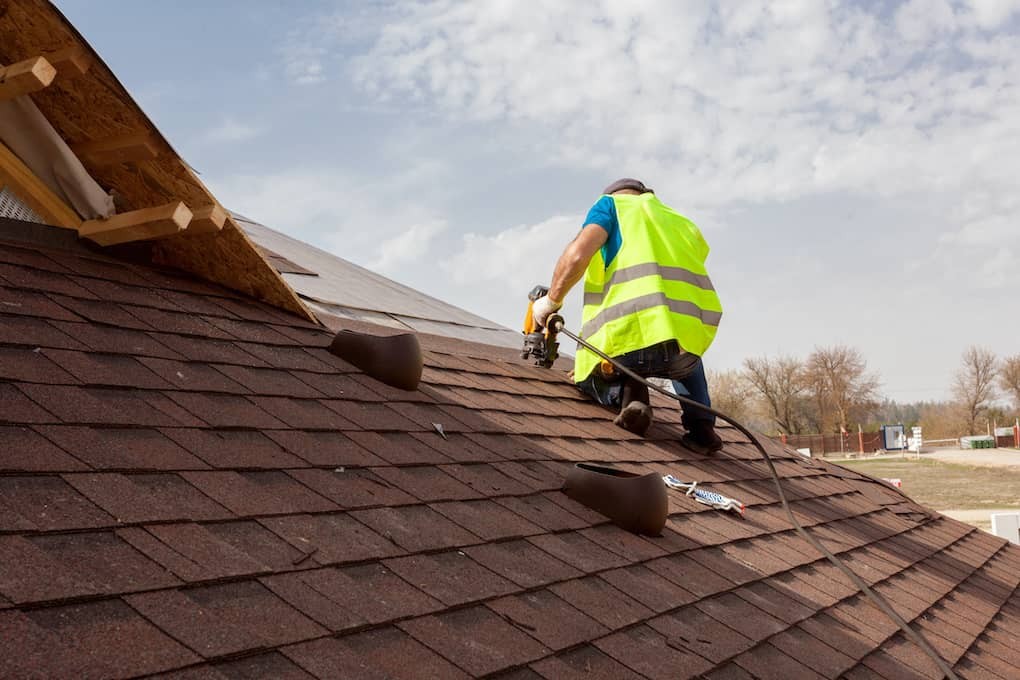Why Roof Safety Matters
When tackling a DIY roofing project, safety should always be the top priority. Working on a roof can be dangerous, with the potential for falls, injuries, and even fatalities. By following proper safety guidelines, you can minimize the risks and ensure a successful and safe project.
Risk Assessment and Planning
Prior to undertaking any roofing project, it is essential to conduct a risk assessment and carefully plan every step. Take into account factors such as the condition of the roof, the height of the roof, the presence of any obstacles or hazards, and the weather conditions. This will allow you to identify potential dangers and develop strategies to mitigate them.
Essential Safety Equipment
Having the right safety equipment is crucial for protecting yourself when working on a roof. Here are some of the essential safety equipment items:
Hard Hats
A hard hat is essential to protect your head from falling objects, such as tools or debris. Always wear a properly fitting hard hat when on the roof.
Safety Harnesses
A safety harness is an important piece of equipment that prevents falls and provides a secure attachment point. It should be worn whenever working at heights, and properly anchored to prevent accidents.
Eye Protection
When working on a roof, debris can easily fly into your eyes and cause injury. Wear safety goggles or glasses that provide proper eye protection.
Gloves
Gloves help protect your hands from sharp objects and provide a better grip when handling tools or materials. Choose gloves that are suitable for the specific task at hand.
Fall Protection Equipment
Fall protection equipment includes items like guardrails, safety nets, and personal fall arrest systems. These are crucial for preventing falls and should be used whenever working at heights.
Proper Clothing and Footwear
Wearing the right clothing and footwear is important for your safety on the roof. Avoid loose-fitting or baggy clothing that may get caught on objects. Opt for non-slip, closed-toe shoes to ensure good traction and prevent accidents.
Weather Conditions and Safety Precautions
Weather conditions can greatly impact the safety of working on a roof. Avoid working on a roof during extreme weather conditions, such as high winds, heavy rain, or snow. Slippery surfaces can increase the risk of accidents. Always check the weather forecast before starting a project and plan accordingly.
Working with Ladders
Using ladders correctly is an essential skill for any DIY enthusiast working on a roof. Here are some ladder safety tips to keep in mind:
- Ensure the ladder is in good condition and secure before climbing.
- Place the ladder on a stable, level surface.
- Always maintain three points of contact when climbing (e.g., two hands and one foot).
- Face the ladder while climbing and descending.
- Do not overreach or lean too far to the sides.
Fall Protection Systems
Implementing fall protection systems is crucial when working on a roof. Depending on the specific project and height, consider using guardrails, safety nets, or personal fall arrest systems. These systems provide an additional layer of protection against falls and should be properly installed and used.
Safe Handling of Tools and Materials
Safe handling of tools and materials is essential to prevent accidents and injuries. Here are some important guidelines to follow:
- Always use tools and equipment that are in good working condition.
- Follow manufacturer instructions for proper tool usage.
- Properly store and secure tools when not in use.
- Use caution when handling sharp objects or heavy materials.
Working with Others
When working on a roof, it is important to have someone else present for assistance or as a lookout. They can help in case of emergencies, provide support, and ensure your safety. Communicate with your assistant and establish clear signals or a communication system to maintain coordination and prevent accidents.
Warning Signs and Common Hazards
Identifying Warning Signs
Before starting a roofing project, it is important to identify warning signs that indicate potential hazards. These signs may include deterioration of the roof structure, cracks, leaks, or sagging areas. Inspect the roof thoroughly to ensure its structural integrity before beginning any work.
Recognizing Common Hazards
Common hazards when working on a roof include slippery surfaces, loose or unstable materials, overhead electrical wires, and exposure to extreme weather conditions. Being aware of these hazards and taking appropriate precautions can help minimize the risks.
Emergency Procedures
Performing First Aid
A basic knowledge of first aid is essential in case of accidents or injuries. Be prepared and have a first aid kit readily available on-site. Learn basic first aid techniques, such as treating cuts, fractures, burns, or falls.
Contacting Emergency Services
In case of serious accidents or emergencies, it is important to have a plan in place to quickly contact emergency services. Post emergency phone numbers in a prominent location and ensure you have cell phone reception on the roof.
Evacuating the Area
In case of fire, structural collapse, or other emergencies, it is important to have an evacuation plan. Familiarize yourself with the layout of the roof and identify safe and quick routes to evacuate the area.
Fire Safety Procedures
When working on a roof, fire safety should always be a consideration. Have fire extinguishers readily available and ensure they are regularly inspected and maintained. Familiarize yourself with the proper use of fire extinguishers and formulate a fire safety plan.
Dealing with Electrical Hazards
Working on a roof may involve the presence of electrical hazards, such as overhead power lines. Always be cautious and maintain a safe distance from electrical wires. If working near electrical equipment, turn off the power and follow proper electrical safety procedures.
Regular Roof Inspections and Maintenance
Regular inspections and maintenance are crucial for keeping your roof in good condition. Schedule periodic inspections to identify any issues or signs of damage. Perform necessary roofing repairs san francisco promptly to prevent further damage and maintain a safe working environment.
Conclusion
By following proper safety guidelines, DIY enthusiasts can ensure their roofing projects are completed safely and successfully. Prioritize safety, use appropriate safety equipment, assess risks, and be prepared for emergencies. With these roof safety tips in mind, you can confidently tackle your DIY roofing projects with peace of mind.








